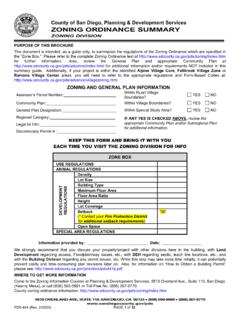Transcription of Definition and Uses of Health Insurance Prospective ...
1 CMS Division of Inst itu t io nal Claims Pro cess ing A p ril 4, 2022 HIPPS Code Maintenance Process 1 Ve r s ion 10 De finition and Us e s of He alth Ins urance Pros pe ctive Payme nt Sys te m Code s (HIPPS Code s ) D e f inition Health Insurance Prospective Payment System (HIPPS) rate codes represent specific sets of patient characteristics (or case-mix groups) Health insurers use to make payment determinations under several Prospective payment systems. Case-mix groups are developed based on research into utilizat ion patterns among various provider types.
2 For the payment systems that use HIPPS codes, clinical assessment data is the basic input. A standard patient assessment instrument is interpreted by case-mix grouping software algorithms, which assign the case mix group. For payment purposes, at least one HIP P S code is defined to represent each case-mix group. These HIP P S codes are reported on c la ims to ins ur e r s . Institutional providers use HIP P S codes on claims in association with special revenue codes. One revenue code is defined for each Prospective payment system that requires HIPPS codes.
3 HIPPS codes are placed in data element SV202 on the electronic 837 ins titutio na l c la ims tr a ns a c tion, using an HP qualifier, or in Form Locator (FL) 44 ("HCPCS/rate") on a paper UB-04 claims form. The associated revenue code is placed in data element SV201 or in FL 42. In certain circumstances, multiple HIPPS codes may appear on separate lines of a single claim. Composition of HIP P S codes HIPPS codes are alpha-numeric codes of five digits. Each code contains intelligence, with certain positions of the code indicating the case mix group itself, and other positions providing additional information.
4 The additional information varies among HIP P S codes pertaining to different payment systems, but often provides information about the clinical assessment used to arrive at the code. Which positions of the code carry the case mix group information may also vary by payment systems. The specific composition of HIP P S codes for past and current payment systems is described in detail below. HIPPS Code Effective Dates Under the Health Insurance P ortability and Accountability Act (HIP AA) rules for transactions and code sets, HIPPS codes are defined as a non-medical code set.
5 Therefore, these codes are effective by transaction date. The HIPPS Code Master List on this website shows code effective From and Through dates. Effective From Dates: HIP P S codes are valid under HIP AA on transactions on or after this date. Since all HIPPS codes to date have been initially created for Original Medicare payment systems, this is also date of service the codes begin to be payable by Medicare. While it is valid under HIPAA rules that a claim for dates of service before this date could be submitted on a transaction after this date, CMS is not aware of a business need CMS Division of Inst itu t io nal Claims Pro cess ing A p ril 4, 2022 HIPPS Code Maintenance Process 2 Ve r s ion 10 for a provider to do so.
6 The code would not be payable by any insurer and no Grouper software would be available to produce a code for those dates. Effective Through Dates: HIP P S codes are no longer valid under HIP AA on transactions on or after this date. This date may vary from the date a code ceases to be payable by Medicare, since other payers may continue to use older HIPPS codes after Medicare transitions to a new payment system. Since CMS, as the HIPPS code set maintainer, may not have complete information about other payers uses of these codes, codes may remain effective under HIPAA long after they cease to be payable on Medicare claims.
7 To reflect this, a separate column on the HIPPS Code Master List indicates the Medicare P ayment Though Date. HIP P S Codes and Modifiers HIPPS codes do not have a dedicated set of modifiers to accompany them. In the great majority of cases, HIP P S codes do not require modifiers. In special circumstances, when a modifier is needed to clarify a payment policy that applies to the claim, it is valid to report a HIP P S code with a HCP CS modifier ( , the KX modifier). History and uses of HIP P S codes The Centers for Medicare and Medicaid Services (CMS) created HIPPS codes as part of the O r igina l Medicare program s implementation of a Prospective payment system for skilled nursing facilities in 1998.
8 Additional HIP P S codes were created for other Prospective payment systems, including for home Health agencies in October 2000 and for inpatient rehabilitation facilities in January 2002. Use of the skille d nur s ing f a c ility HIP P S codes was expanded to Medicare swing bed facilities in rural hospitals in July 2002. TRICARE, the Department of Defense Insurance program for active duty service members, their families, and retirees, also uses HIPPS codes on the ir c la ims. Additionally, HIP P S codes have been used by certain State Medicaid programs.
9 Specific uses of HIPPS Codes Sk illed Nursing Facility Prospective Payment System Past uses Under the skilled nursing facility Prospective payment system (SNF PPS), from October 1, 2010 to September 30, 2019, a case-mix adjusted payment for varying numbers of days of SNF care was made using one of 66 Resource Utilization Groups, Version IV (RUG-IV). These groups replaced the RUG-III system, which was in effect from 1998 to 2010. SNF HIPPS codes are based on assessments made using the Minimum Data Set (MDS). Grouper software run at a skilled nursing facility or swing bed hospital used specific data CMS Division of Inst itu t io nal Claims Pro cess ing A p ril 4, 2022 HIPPS Code Maintenance Process 3 Ve r s ion 10 elements from the MDS to assign beneficiaries to a RUG-IV code.
10 The Grouper output the RUG-IV code, which is combined with an assessment indicator to create the HIPPS code to be entered on the claim. The following scheme was developed to create distinct 5-position, alphanumeric SNF HIP P S codes: The first, second and third positions of the code represent the RUG-IV case mix group. If the MDS assessment was not performed appropriately, these positions may instead carry a default value. The valid values for these positions were as follows: RUG-IV GROUP CODES: Rehabilitation Plus Extensive Services: RUX, RUL, RVX, RVL, RHX, RHL, RMX, RML, RLX Rehabilitation: RUA, RUB, RUC, RVA, RVB, RVC, RHA, RHB, RHC, RMA, RMB, RMC, RLA, RLB Extensive Services: ES3, ES2, ES1 Special Care High: HE2 , HE1 , HD2 , HD1 , HC2 , HC1 , HB2 , HB1 Special Care Low: LE2, LE1, LD2, LD1, LC2, LC1, LB2, LB1 Clinically Complex.














